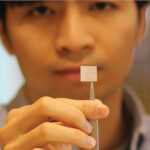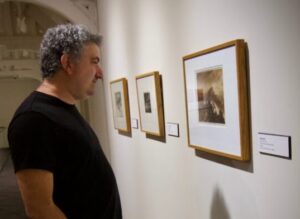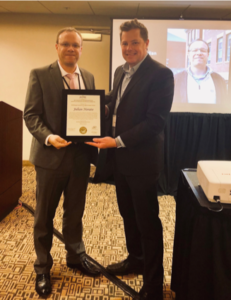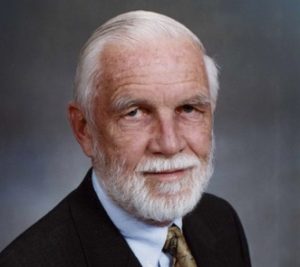This past January, the University of Connecticut School of Engineering held the Women in STEM Frontiers in Research Expo (WiSFiRE), which brought together and celebrated some of the important research and journeys of female faculty in the School of Engineering. The conference was co-organized by our own Prof. Anna Tarakanova.
Faculty News
Prof. Poludnenko’s Paper on Supernovae Explosions Published in Science
Thanh Nguyen named the ACell Young Investigator Faculty Award Winner
 Prof. Thanh Nguyen receives the highly regarded ACell Young Investigator Faculty Award at the 2020 Regenerative Medicine Workshop, which brings together leading experts from across the expansive field of regenerative medicine. Prof. Nguyen will deliver a keynote speech along with other world renowned researchers in the field of regenerative medicine during the event, which will take place at the Wild Dune Resort, South Carolina, in March 2020.
Prof. Thanh Nguyen receives the highly regarded ACell Young Investigator Faculty Award at the 2020 Regenerative Medicine Workshop, which brings together leading experts from across the expansive field of regenerative medicine. Prof. Nguyen will deliver a keynote speech along with other world renowned researchers in the field of regenerative medicine during the event, which will take place at the Wild Dune Resort, South Carolina, in March 2020.
Additional details are available through the workshop website.
Buzzing Through the Blood-Brain Barrier
Prof. Thanh Nguyen’s research group has reported on the first biodegradable ultrasonic transducer that can help medication move from blood vessels into brain tissues and circumvent the body’s traditional defense mechanisms.The work is published in the journal of PNAS (Proceeding of National Academy of Science) (Dec 2019), and the two first authors of this paper are PhD students in Nguyen lab, namely Thinh Le and Eli Curry.

When implanted into the brain, this novel device can generate ultrasonic waves for buzzing drugs through the blood-brain barrier (BBB) to treat brain diseases (e.g. cancers), and then self-vanish, avoiding the need of invasive removal surgery that is often required for conventional medical implants. More details can be found in the UConn Today article.
Professor Matheou’s Exhibit @ the Benton Blends Art and Science With Teaching

By: Alexandra Meropoulos, Student Written Communications Specialist, UConn School of Engineering
Art and science are two fields that appear to be worlds apart at first glance, but according to George Matheou, assistant professor of mechanical engineering, the intersection between the two are actually extremely important. This notion became the inspiration behind his art exhibit called Fluid Dynamics in Art and Nature at the William Benton Museum of Art.
Read more by following this link.
Norato Receives ASME Young Investigator Award
by Kassidy Manness
ME Communications
kassidy.manness@uconn.edu
During the 45th Annual Design Automation Conference, held by the American Society of Mechanical Engineers (ASME) this past summer, Mechanical Engineering Professor Julián Norato has been awarded the prestigious Design Automation Young Investigator Award.

This award is given once each year “to recognize an outstanding young investigator who is making noteworthy contributions in the area of design automation, including research in design representation, design optimization, design evaluation, and/or design integration.” The award was presented at the ASME’s Design Automation Conference, which was held on August 18-21, 2019 in Anaheim, California. This conference brings together every year international experts in the field of design automation.
Norato was given this award based on the work and research he has done in topology optimization. Topology optimization is a computational methodology to automatically design parts to maximize structural strength with minimal amounts of material in the most efficient and effective way. A major focus of Norato’s research group is to do the topology optimization employing exclusively certain shapes, like bars or plates, that make manufacturing with conventional processes easier.

Prof. Christopher Mattson presented the award to Prof. Norato “in recognition of his expertise in topology optimization, specifically his advances in stress-based topology optimization and development of the geometry projection method” and to “recognize his continuous and dedicated service to the Design Automation Conference and his outreach to the community.”
50 years ago, Prof. Langston helped power Apollo 11 to the moon and back
 Our own Prof. Lee Langston helped Apollo 11 make history by being part pf the team designing the fuel cells that powered Apollo 11 to the moon and the return trip to Earth.
Our own Prof. Lee Langston helped Apollo 11 make history by being part pf the team designing the fuel cells that powered Apollo 11 to the moon and the return trip to Earth.
Read more in the Hartford Courant’s article.
50 years ago, Prof. Langston helped power Apollo 11 to the moon and back
 Our own Prof. Lee Langston helped Apollo 11 make history by being part pf the team designing the fuel cells that powered Apollo 11 to the moon and the return trip to Earth.
Our own Prof. Lee Langston helped Apollo 11 make history by being part pf the team designing the fuel cells that powered Apollo 11 to the moon and the return trip to Earth.
Read more in the Hartford Courant’s article.
Fueling the Fire: Studying Flame Behavior to Improve Combustion Systems
The power you feel underneath you when you’re on a plane as it takes off is tremendous. The physics that enable the remarkable feat of lifting a 175,000-pound midsize commercial aircraft into the sky and keeping it there are just as incredible – and complicated.
There are four components to a commercial aircraft gas turbine engine: the fan that produces most of the thrust, the compressor, which compresses the incoming air, the combustor which burns the fuel to create high-energy gas, and the turbine that produces work from that gas to power the fan and exhaust to produce additional thrust.
The challenge in this system is keeping the flame in the combustor burning. Flame blowoff can occur when the air flow speed is very high, or the fuel-air mixture is weak so that the flame cannot be stabilized, so it moves downstream and eventually extinguishes itself.
University of Connecticut professor of mechanical engineering, Baki Cetegen has received $320,000 from the National Science Foundation to study this problem by investigating how different fuels and high levels of flow turbulence affect the occurrence of flame blowoff.